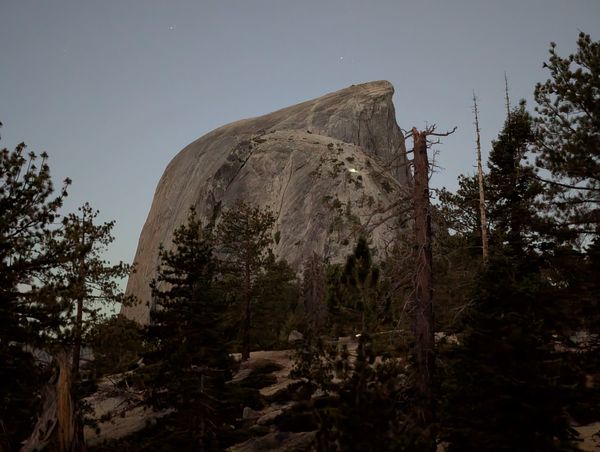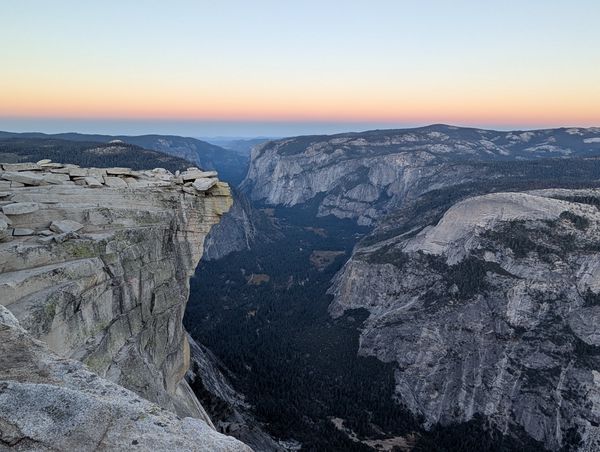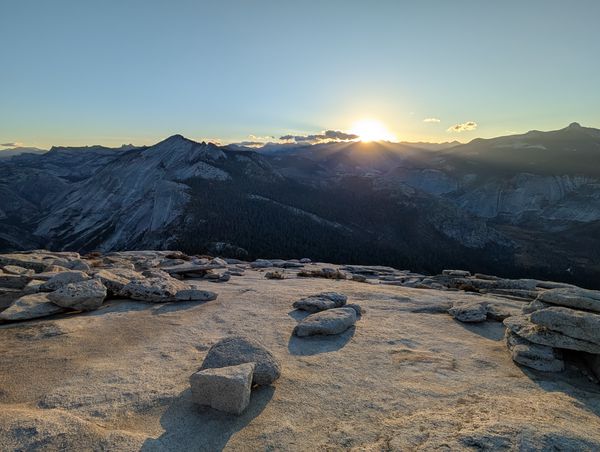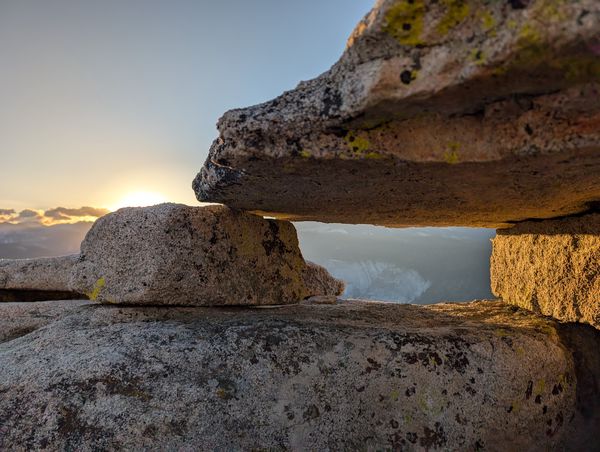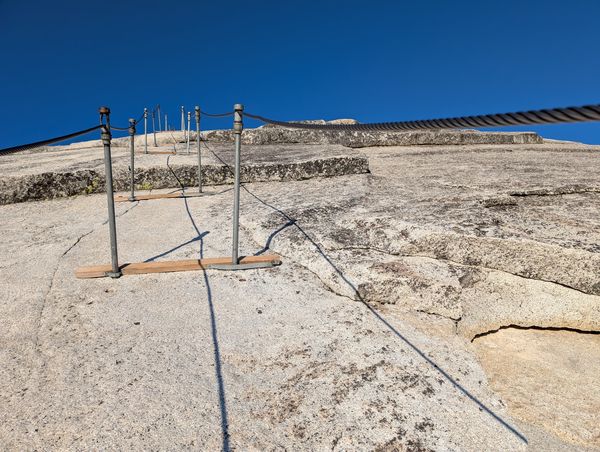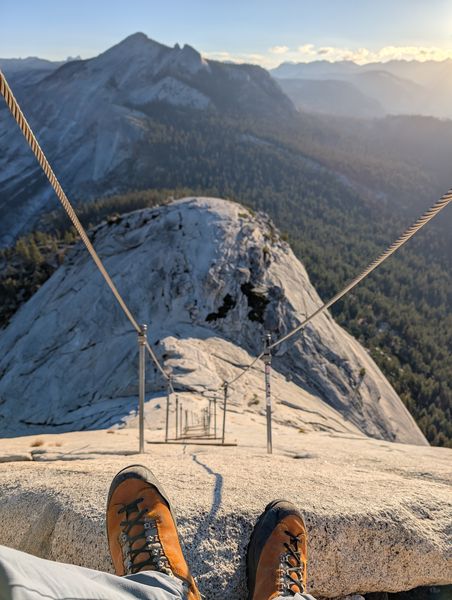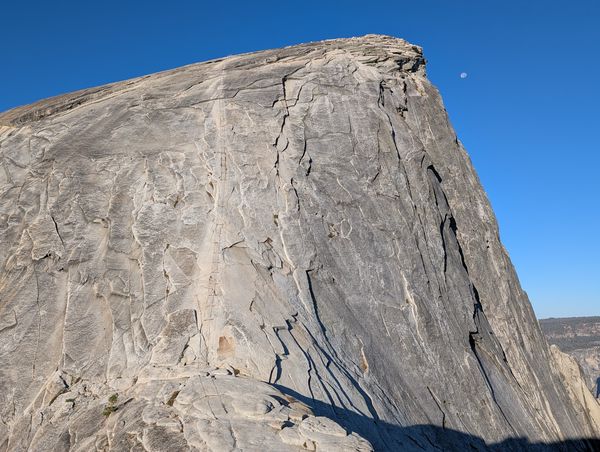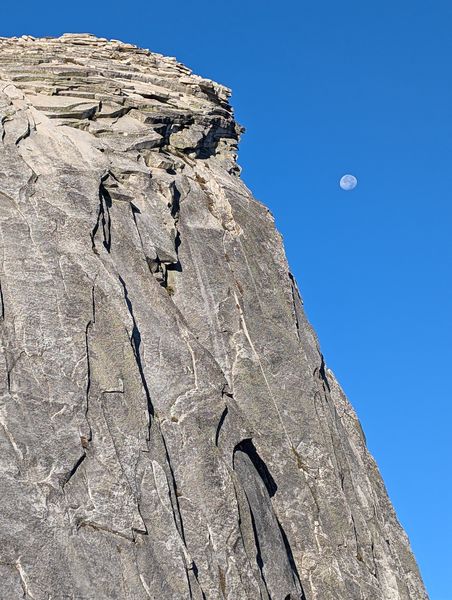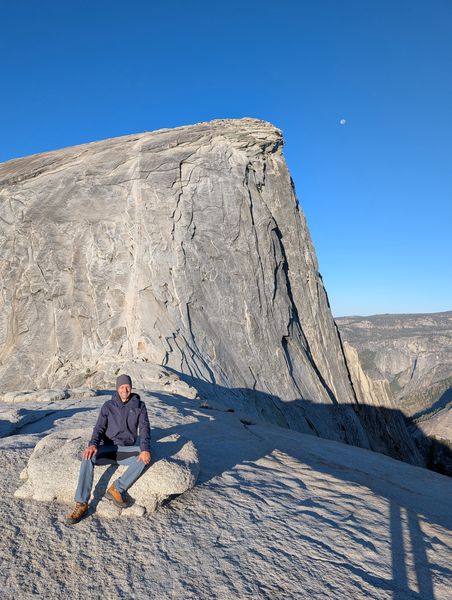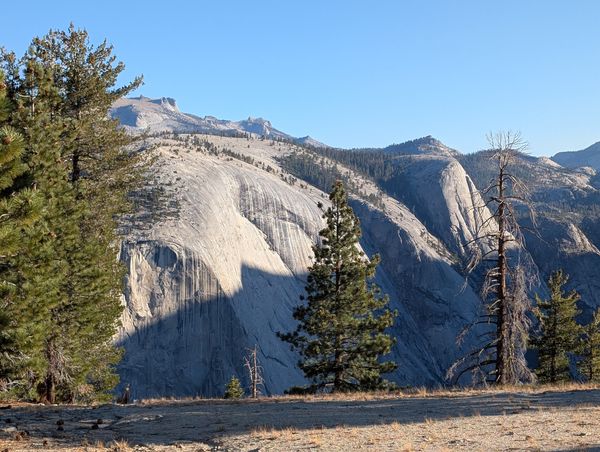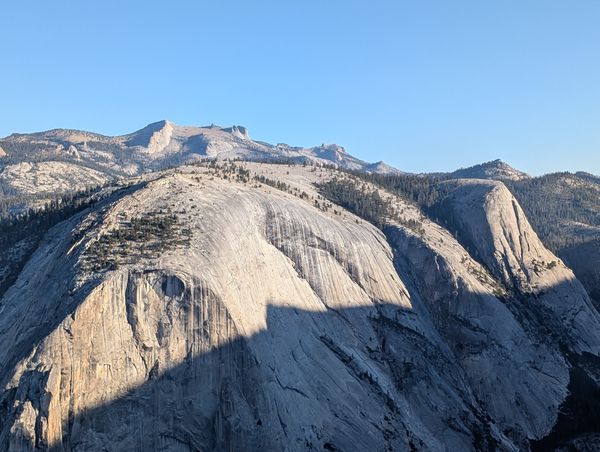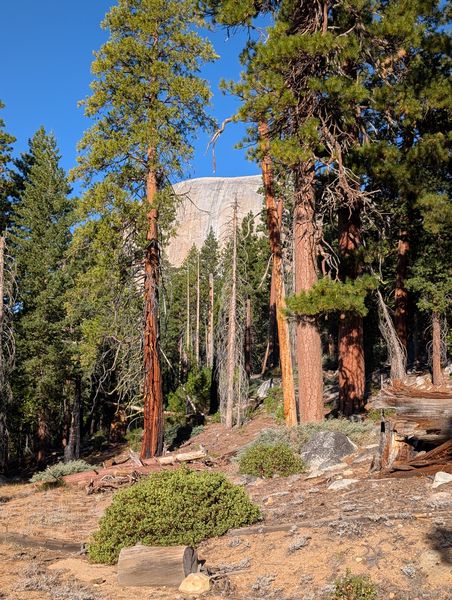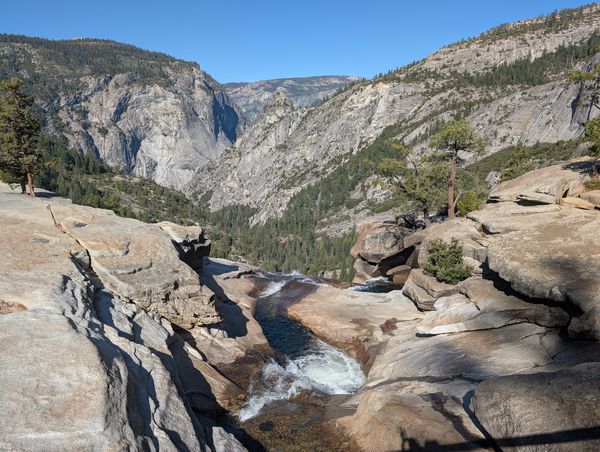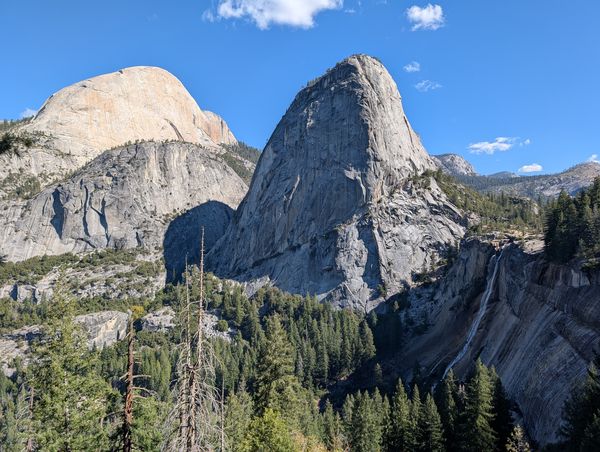Half Dome
Hiking
United States
Fifteen years ago, in the late summer of 2009, my then-partner and her family invited me on a trip to California. Fresh off my Master’s degree and having just moved in with my girlfriend, I was poised to start a new job later that year. The trip felt like the perfect escape before stepping into a new chapter of life. Apart from a beach vacation in Turkey, this would be my first trip outside of Europe, and I couldn’t wait to explore a place so different from my home.
After a week with my partner’s family and friends—adjusting to jet lag and settling in—we embarked on a two-week road trip. Starting in San Jose, we followed Highway 1 down the coast to Big Sur and Monterey, camping on breathtaking beaches, bodysurfing, and soaking in the California sun. We continued south through Los Angeles to San Diego, crossed the border to Tijuana for a day, then turned inland for the second leg of the journey: a return trip through deserts and National Parks. It all culminated in a barbecue on the shores of Lake Tahoe, catching a basketball game in Sacramento, and returning to San Francisco with hearts full of memories. That trip ignited my passion for travel and exploration in ways I hadn’t imagined.
No California road trip would be complete without a visit to Yosemite, one of America’s most iconic National Parks. Though we’d planned to spend a night there, forest fires and road closures forced a detour, leaving us only a few hours to explore. Still, we made the most of it, hiking short panoramic trails. My eyes locked onto the towering granite peaks—El Capitan, Half Dome—giants I’d only seen in climbing documentaries. Maybe one day, I thought, I’d come back and climb them.
Fifteen years later, I’m living in the Sunshine State. One of the first things I did after arriving—before I’d even settled into my apartment—was sign up for the permit lotteries to climb Mount Whitney and Half Dome. I had to pass on Whitney, but I became fixated on returning to Yosemite and scaling Half Dome.
12:15 a.m., a couple of months later, my alarm rings. I climb out of a bunk bed in a dorm cabin in Midpines, already dressed and ready to go. An hour later, I park my car in Curry Village. At 1:45 a.m., under the cover of night, I start hiking. I like hiking at night—the peacefulness and quiet solitude intensify in those hours. I often strive to reach a peak at dawn, in time to marvel at the reds and ambers of the early morning as the sun creeps above the horizon. Often, I return in time for breakfast, having already achieved everything I set out to do while others are just waking up.
On Half Dome, starting early comes with extra benefits: avoiding the two biggest risks—bad weather and crowds, both more prevalent in the afternoon. Guided by the light of an almost full moon and the beam of my headlamp, I set off. A park ranger had advised me to make some noise to avoid startling bears, so I tied a coffee mug and a safety whistle to the side of my backpack. Their soft rattle accompanied every step.
After steep concrete sections, I cross a small bridge over the Merced River—my last chance to refill my water bottles. The trail begins properly, and I soon reach the intersection of the John Muir Trail and the Mist Trail. I choose the latter; it’s steeper and shorter, leading over countless steps carved from the rock. I ascend next to Vernal Falls, a gorgeous waterfall whose beauty is evident even in the moonlit night. The water’s roar fills the air, adding to the eerie nighttime atmosphere.
As I climb, Liberty Cap and Mount Broderick loom ahead, their dark silhouettes blocking the view of Half Dome. A little further upstream, I cross another bridge. The path steepens through a dark forest, and on top of Nevada Falls, the Mist Trail reconnects with the John Muir Trail, leading to Little Yosemite—some hikers camp here to split the journey into two days since it’s roughly the halfway point. At 7,000 feet, the John Muir Trail branches eastward, continuing for 200 miles to Mount Whitney. I stay on the path toward Half Dome, inching closer. I push through the forest, catching glimpses of Half Dome peeking through the trees. The sheer granite wall ahead looks like something reserved for serious rock climbers. My mind struggles to comprehend how I’ll scale it, let alone how, according to the maps, I’ll be standing on top within the next hour.
Who am I kidding, though? Of course, I know the answer. The final push to the summit is a 120-metre-long, 45-degree granite slope called The Cables—the most infamous part of the hike. It’s the last obstacle, secured by two ropes and a few wooden planks for footing. As dawn begins to break, I reach the stairs leading up to Sub Dome. A chilly breeze cuts across my face, and I look forward to the sun warming my fingers.
At the top of Sub Dome, Half Dome stands in full, awe-inspiring, respect-demanding glory. The moon hangs over it in the final moments before sunrise. I descend to the start of the Cables and put on my gloves. A quick prayer, and I’m on my way. The first few steps build confidence—my hiking boots find grip in the worn granite. Though 300 permits are granted each day, I’m alone, accompanied only by my labored breath and the quiet respect I feel for the mountain. I grab the cables with both hands, pulling myself upward in a rhythmic, powerful motion. I’m grateful for every hour spent training my upper body. I don’t look left, right, or behind me. My focus is solely on each handhold, each foothold. The breathtaking views can wait; for now, my goal is simply to climb.
After about 20 minutes, I step onto the summit plateau. The wind is cold, but the sun is just moments from rising. I feel a rush of excitement mixed with the exhaustion of the climb. I find shelter between rocks, pull out my food and water, and wait.
The scenery is breathtaking. The only thing missing from the view is Half Dome itself, now beneath me.
After about half an hour, I debate staying longer to soak in the rising sun, but I decide to descend while the Cables are still empty. I pack up my gear and begin the careful retreat. Descending backwards, as I came up, feels easier. Fifty feet from the bottom, I rest my feet on a large granite step and take a moment to look around. From this vantage point, the steepness of the climb becomes more apparent. A few climbers have started their ascent, disappearing behind Sub Dome.
I descend slowly, passing many hikers along the way—some surprised to see someone coming down so early, others offering a quick greeting. One man claps as I pass. It feels strange to wish people “good morning” after having been on the trail for hours, the night still fresh in my memory. The hours of hiking blend together, and time feels like an abstract concept after walking through the night.
The return is long and sluggish. I skip the Mist Trail shortcut and take the John Muir Trail past Nevada Falls, enjoying the iconic view of Half Dome, Liberty Cap, and the Merced River. As I near the trailhead, the crowd thickens, casual hikers now filling the path. I reach my car, finally peeling off my boots and savouring the relief of sitting down.
I’ve read mixed accounts of this hike. Some call it the toughest they’ve ever done, while others say it’s easier than expected. I can see both sides of the argument. There’s nothing technically challenging except for the Cables, which account for a small part of the route. The challenge comes from the length, especially the descent. But the views more than compensate for the effort.
Driving home from Yosemite, I reflect on my hike and recollect my first visit 15 years ago. It feels like I’ve come full circle. As John Muir writes, I’m glad that I have seen so much and glad that so much is so little of the whole. I’ll be back, and it won’t take another 15 years.
